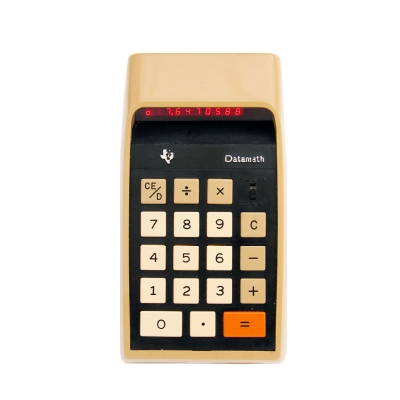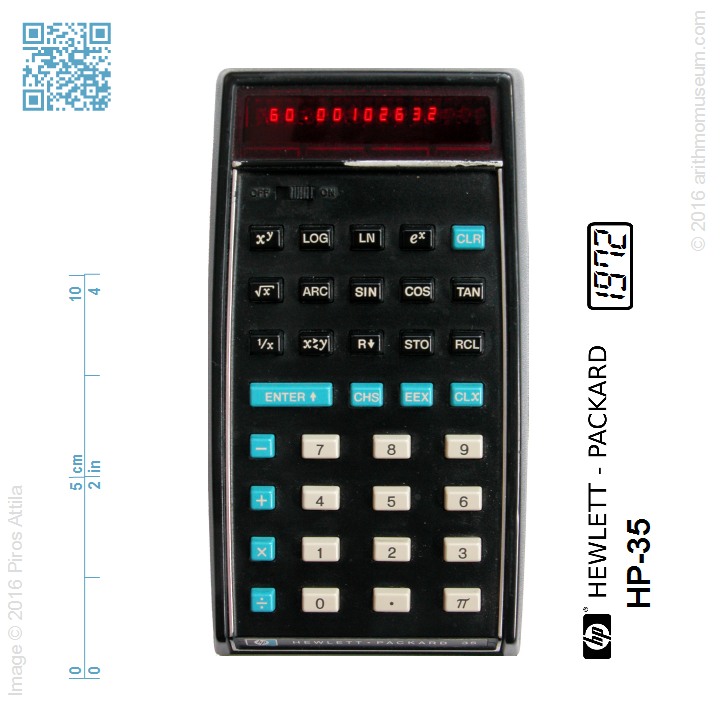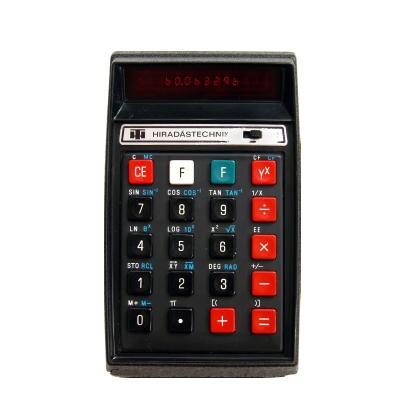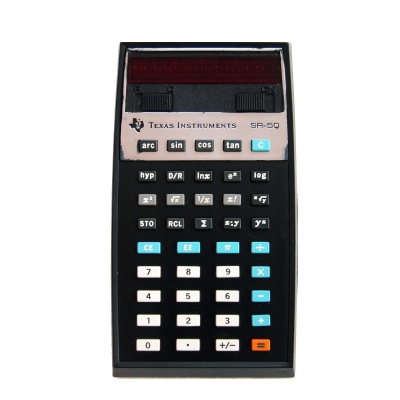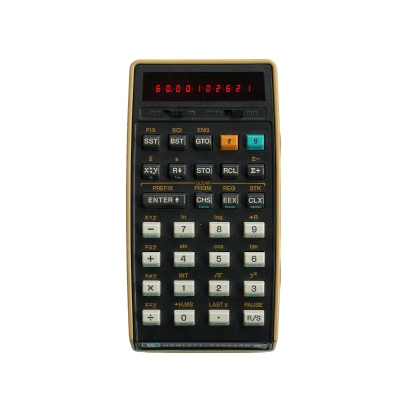Hewlett-Packard 35 (2)
When it appeared, it was considered special in almost every aspect: neither its size, nor its shape, nor its use were conventional. The smaller-than-average size of modern pocket calculators that perform basic operations, the designed device housing encouraged many other manufacturers around the world to design machines with a similar design. The operations that could be performed by the HP-35 created a new category. Its success clearly showed that there is considerable customer demand for similar machines, so leading circuit manufacturers began to design chips for building cheap scientific machines with similar features, but with simpler operation. RPN logic was also considered unusual, but due to its simplicity and minimal hardware requirements, others also tried to produce machines with similar functionality, such as National Semiconductor published a series of models in 1975-76, some of which were well known in Hungary: for example, the TK-1024 type assembled by Híradástechnika Szövetkezet was in many respects very similar to the HP-35.
Interesting fact: the HP-35 type was also presented at the Budapest International Fair (BNV) in 1973, and of course it became a success in the Communist Block: national companies often chose the unofficial route to get such a machine. At the same BNV, Híradástechnika Szövetkezet presented its pocket calculators manufactured under license from Bowmar, as well as EMG's first calculator with integrated circuit, the HUNOR 81.
| Manufacturer: | Hewlett-Packard Corporation (USA/Singapore) |
| Mfg. date: | 1972-75 |
| Size: | 8×14,5×3,3 cm |
| Weight (ready for operate): | 240 g |
| Type: | scientific |
| Capacity: | 10/10+2 digits (input/display) 10/10+2 digits (internal precision) |
| Operating logic: | RPN |
| CPU: | HP 1820-1169 |
| Registers: | 4 standard 1 memory (without arithmetic) |
| Features: | +/-change sign (direct entry of negative numbers) RVexchange registers (X-Y) Ffloating-point notation Sciscientific (exponential) notation Sqrsquare root pivalue of pi (3.1415..) can be recalled 1/xreciprocal trigtrigonometrical functions (sin, cos, tan and inverses: arcsin, arccos, arctan) logexponential and logarithmical functions (10- and e-base) yxraising to power |
| Display: | 15 digit LED (HP) |
| Power: | 3×AA-size NiCd battery pack |
| Test results: | trigonometry:result of sin-1(cos-1(tan-1(tan(cos(sin(60°)))))), reference value: 60. 60.00102632 exponential:result of 0.999160000, reference value (first 14 digits): 3.0068804206375×10-70 3.006896579E-70 |
